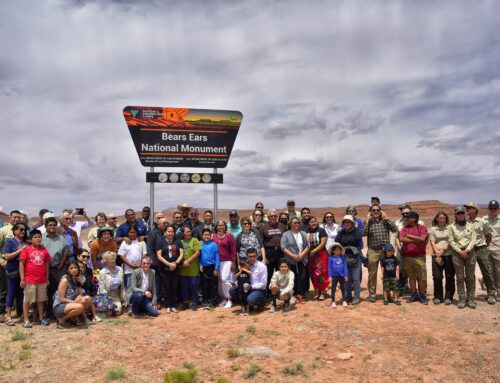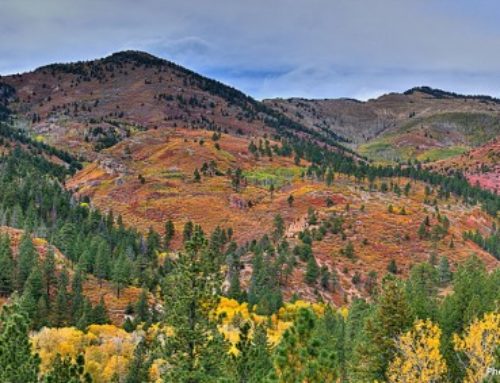A New Era of Tribal Sovereignty and Land Stewardship at Bears Ears
We are excited to share a major milestone in the history of Bears Ears National Monument.
On January 14, 2025, the Bureau of Land Management and the U.S. Forest Service formally adopted the Resource Management Plan for Bears Ears National Monument. This decision reaffirms Tribal sovereignty and ushers in a new era of collaborative land stewardship, recognizing Tribal Nations as collaborative managers of their ancestral homelands.
The Bears Ears Resource Management Plan is the product of a unique and ongoing collaboration between the five Tribes of the Bears Ears Commission—the Hopi Tribe, Navajo Nation, Ute Indian Tribe of the Uintah & Ouray Reservation, Ute Mountain Ute Tribe, and Zuni Tribe—and federal agencies. From the start, this collaborative approach was a Tribal vision, included in the Tribes’ original proposal for the designation of Bears Ears National Monument, to bring Indigenous Knowledge and western science together to care for this sacred place.
Throughout the planning process, local community members provided valuable perspectives through public meetings, comment periods, and stakeholder consultations. The Tribes and federal agencies worked closely to incorporate this input, ensuring the plan strikes a balance between protecting cultural and natural resources and allowing the landscape to be used and experienced by all.
The Bears Ears Resource Management Plan is the first of its kind to embed Indigenous leadership and Traditional Indigenous Knowledge at every stage. It affirms the sovereign role of Tribal Nations in stewarding their ancestral homelands and sets a precedent for the future of national public lands management across the country, one where Indigenous leadership guides stewardship. It is a hopeful step forward in demonstrating that Indigenous-led stewardship is essential to the future of our shared landscapes.
What The RMP Does
The finalized Resource Management Plan ensures that the values and priorities of the Tribes are embedded in all aspects of managing the 1.36 million acres within the Bears Ears National Monument.
Here are some of the key areas it addresses:
Cultural Resources
The RMP protects petroglyphs, ancestral dwellings, and other sacred sites by limiting access where appropriate, enhancing Tribal-led monitoring, and developing education and interpretation programs to encourage respectful visitation.
Water Resources
The RMP emphasizes the importance of protecting springs, wetlands, watersheds and other water resources. It supports actions to improve water quality and restore natural flows using both scientific practices and traditional ecological knowledge.
Plants and Animals
The RMP supports the conservation of native plant and animal species through habitat protection and ecosystem restoration. It prioritizes the health of culturally important species and commits to Indigenous stewardship practices that reflect long-standing relationships with the land.
Recreation
The RMP provides a framework for managing recreational use that is guided by principles of respect, sustainability, and shared responsibility. The plan includes strategies to manage visitor access, designate trails and routes, and promote education about the sacredness of the landscape.
Connecting Indigenous Communities to the Landscape
The RMP allows Tribal community members to access the monument for cultural ceremonies, subsistence resource gathering, and other traditional practices; strengthening the connection between Indigenous communities and their ancestral lands.
This plan not only strengthens protections for Bears Ears, it is a model for how national public lands can be managed in partnership with Tribal Nations, respecting sovereignty, culture, and stewardship.
We want to thank everyone who has stood with us throughout this journey. Your support has helped ensure that this Tribal-led collaborative model is now embedded in how national public lands are cared for.
We’ve been here since time immemorial, and we’re not going anywhere. Together, we will continue to defend and steward Bears Ears for the communities of today and for generations to come.
Follow our blog and social media for continued updates and opportunities to stay involved as we move forward together in this new era of stewardship.


